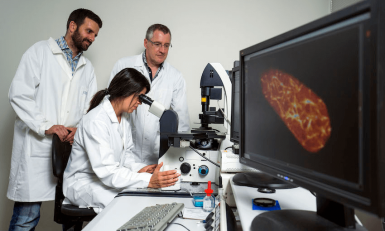Feeling the force of fungi to stop it killing our forests
20 November, 2018
Today the government announced a $13.75 million funding boost for research to combat the spread of kauri dieback and myrtle rust. Could microfluidics be the solutions we are looking for?
 Here in New Zealand, our native trees are currently under threat from two pathogens – an oomycete (water mould) called Phytophthora agathidicida, which causes Kauri dieback, and Austropuccinia psidii, the fungus behind myrtle rust. Organisms like these are found in almost every ecological niche, but what sets these two apart is how they grow and spread.
Here in New Zealand, our native trees are currently under threat from two pathogens – an oomycete (water mould) called Phytophthora agathidicida, which causes Kauri dieback, and Austropuccinia psidii, the fungus behind myrtle rust. Organisms like these are found in almost every ecological niche, but what sets these two apart is how they grow and spread.
The complex process is known as tip growth. Rather than extending from the root, like human hair does, in fungi and water moulds cells in their tips extend, and form strong, thread-like structures called hyphae. In some cases, hyphae can grow invasively, penetrating deep into the roots and leaves of other plants, on their search for food. This is why they’ve caused some of the most devastating extinctions of both flora and fauna throughout history.
Understanding how these hyphae generate force gives us an insight into the mechanics of pathogen growth, and is a key step towards eradicating them. This is the focus of research by MacDiarmid Institute principal investigator, Dr Volker Nock...


